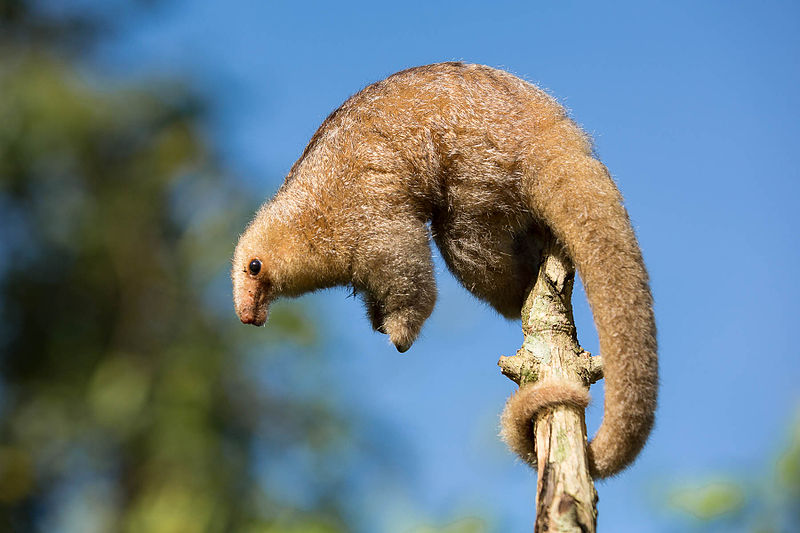Plays Well With Others
The silky anteater has little interaction with other species
because it is arboreal and
nocturnal. It sleeps wrapped in a ball in
the canopy of the forest all day, in silk-cotton trees because these
trees provide camouflage (Catchpoole 2012). It is active between 15
minutes after sun set up to a couple hours before dawn (Hayssen et
al. 2012).
The silky anteater is an insectivore. It mainly interacts with
ants,
eating between 700 to 5,000 a day from a variety of genera,
including Camponotus, Crematogaster, Dolichoderinae, Pheidole,
Procryptocerus, Pseudomymex, Solenopsis, and Zacryptocerus.
It also eats some
bettles as it is an insectivore. It uses its sharp claws on its front paws to open a branch and then
proceeds to scoop out ants with its tongue (Hayssen et al. 2012).
Its diet makes C. didactylus a secondary consumer.
Some natural predators of the silky anteater are the tertiary
consumers
hawks and
eagles (Schober 1999).
If you would like to learn more about C. didacylus's
defense response, please check out
Form and Function. They also avoid predators by living in Ceiba trees because
the trees have large silky pods that the C. didactylus can use for
camouflage (Schober 1999).
C. didactylus is also susceptible to several parasites, for example the
Amblyomma humerale (a tick), the Eimeria cyclopei (a unicellular
Alveolate), and a few nematodes (Graphidiops cyclopi and
Cyclobulura
lainsoni). These parasites can lead to morbidity and
mortality. Cyclopes didactylus can also host the virus for yellow
fever (Hayssen et al. 2012).
C. didactylus also interacts with members of its own species when
it mates. The father often carries the offspring on its back while
it moves around. Also, the mother leaves the young about eight hours
a night to forage for food (Hayssen et al. 2012). The mother and
 father also feed the offspring with regurgitated insects that are
semi-digested (Schober 1999). For more information, please see our
Reproduction page. To learn more about their food habits, please
visit
this webiste.
father also feed the offspring with regurgitated insects that are
semi-digested (Schober 1999). For more information, please see our
Reproduction page. To learn more about their food habits, please
visit
this webiste.
While it is
on the endangered list, C. didactylus is considered
“least concern” although the small separate
population in northeastern Brazil is threatened by sugarcane
production (IUCN Red List of Threatened Species 2013). If you
would like to learn more about its endgangerment, please visit the
International Union for Conservation of
Nature and Natural Resources website. It is often protected by its own behaviors of being
nocturnal, very small, and living discreetly in trees (Hayssen
et al. 2012). C. didactylus also requires very little
sustenance to live. In a study performed in Panama during the
dry season, its food, water, and energy requirements were only
one-third to two-thirds of the expected values for a mammal with
its body size (Nayga and Montgomery 2012). This allows it to
live in many different areas of Central and South America with
forests.
Go learn some
Fun Facts about the Silky Anteater!
Home